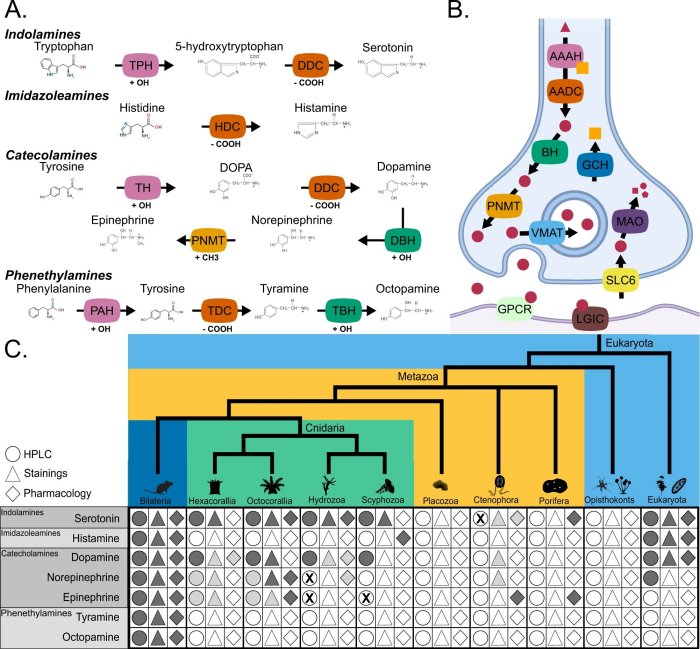Jan Bartek – AncientPages.com – A team of scientists led by researchers from the University of Leicester have discovered that the genes required for learning, memory, aggression and other complex behaviors originated around 650 million years ago.
The findings led by Dr. Roberto Feuda, from the Neurogenetic group in the Department of Genetics and Genome Biology and other colleagues from the University of Leicester and the University of Fribourg (Switzerland), have now been published in Nature Communications.

Credit: Adobe Stock – cooperr
Dr. Feuda said, “We’ve known for a long time that monoamines like serotonin, dopamine and adrenaline act as neuromodulators in the nervous system, playing a role in complex behavior and functions like learning and memory, as well as processes such as sleep and feeding.”
“However, less certain was the origin of the genes required for the production, detection, and degradation of these monoamines. Using the computational methods, we reconstructed the evolutionary history of these genes and show that most of the genes involved in monoamine production, modulation, and reception originated in the bilaterian stem group.”
“This finding has profound implications on the evolutionary origin of complex behaviors such as those modulated by monoamines we observe in humans and other animals.”
The authors suggest that this new way to modulate neuronal circuits might have played a role in the Cambrian Explosion—known as the Big Bang—which gave rise to the largest diversification of life for most major animal groups alive today by providing flexibility of the neural circuits to facilitate the interaction with the environment.

An overview of the monoamine system. Credit: Nature Communications (2023). DOI: 10.1038/s41467-023-39030-2
Dr. Feuda added, “This discovery will open new important research avenues that will clarify the origin of complex behaviors and if the same neurons modulate reward, addiction, aggression, feeding, and sleep.”
The study was published in the journal Nature Communications
Written by Jan Bartek – AncientPages.com Staff Writer





